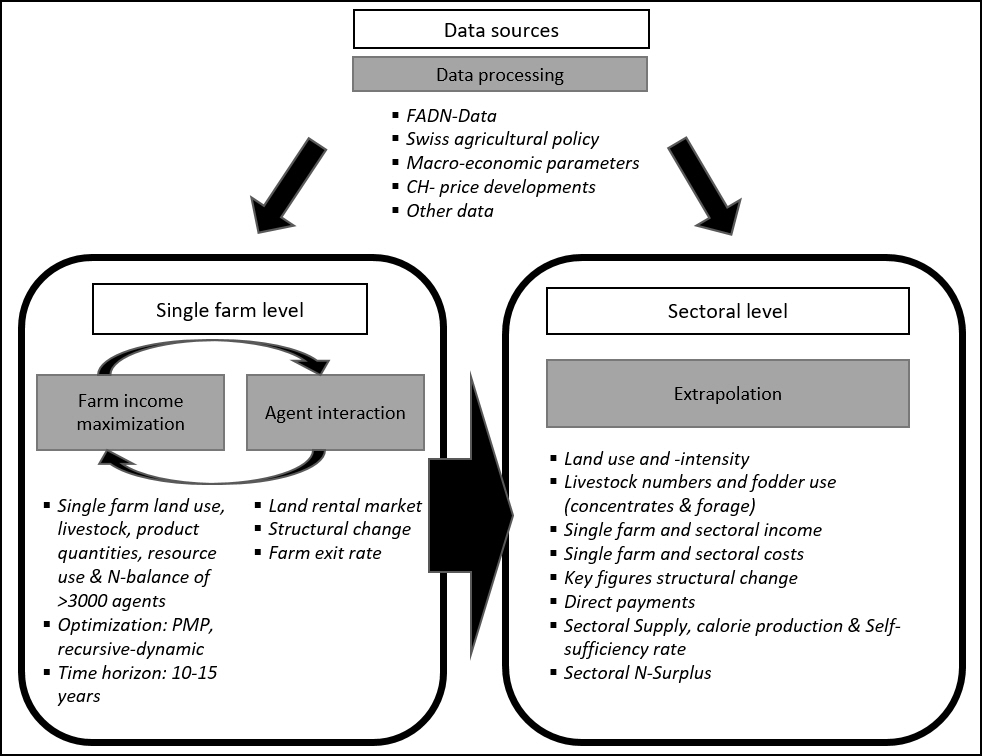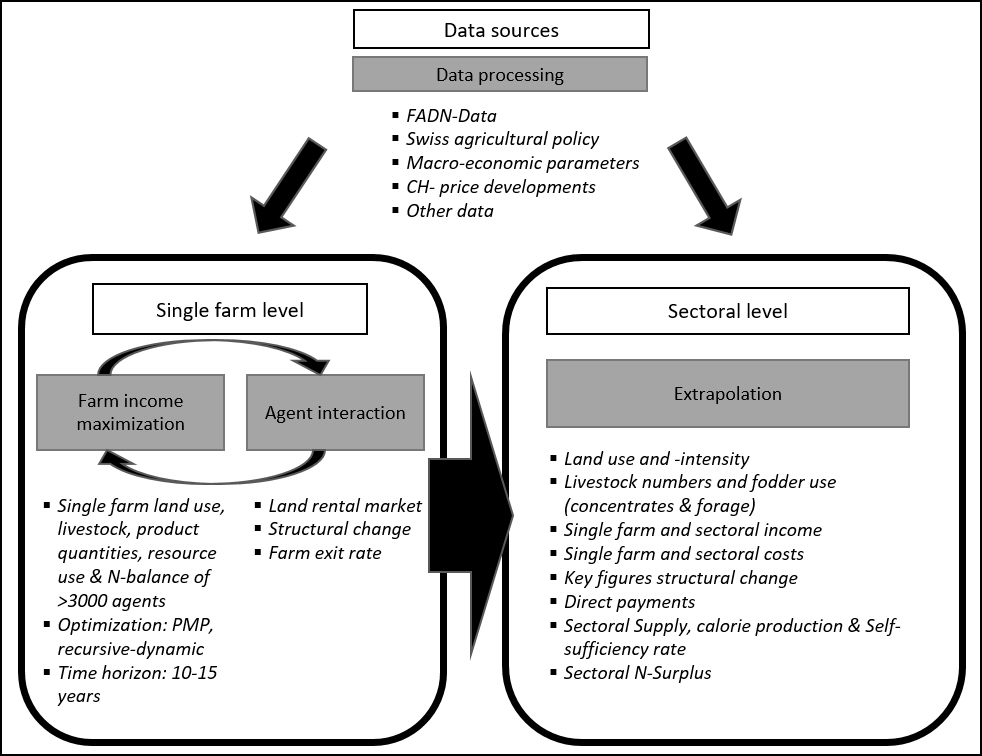SWISSland is a hybrid model combining optimisation and simulation methods on both a micro- and macro- (i.e. sectoral) level.
One main focus of the SWISSland model is the supply module, in which over 3000 farms organised into ‘communities’ exchange land with one another and optimise their portfolio annually in terms of prices and direct payments. The agent-based model approach also allows subjective behaviour on the part of the farm manager to be taken into account during decision-making. A recursive-dynamic model approach, in which previous production capacities and investments effected on the basis of production decisions are carried over from one year into the next, was found to be appropriate for the individual-farm optimisation models. SWISSLAND is designed to simulate medium-term adaptation reactions of around 10–15 years. On the basis of these farms, and once the optimisation process has taken place, a relatively complex extrapolation to Switzerland’s entire sector is performed.
Located downstream of SWISSland are various tools from the environmental sector which allow statements on trends in environment-related parameters such as nitrogen balance to be made for the different model scenarios.







